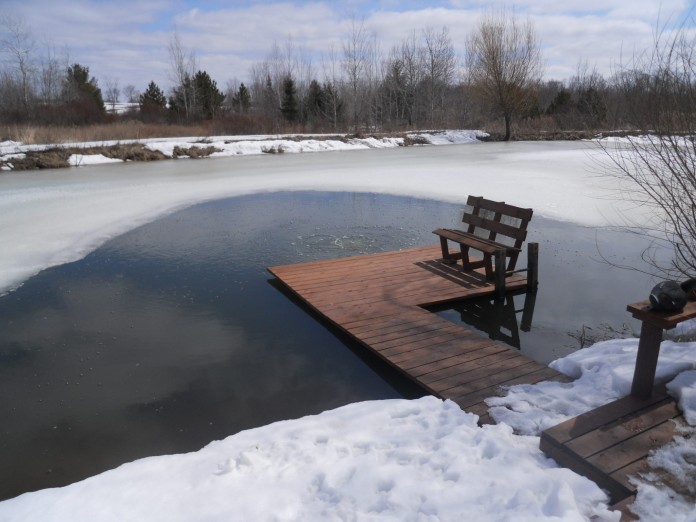AMES, Iowa — Winter fish kills and oxygen depletion on ponds are particularly common on ponds with high nutrient loads, heavy aquatic vegetation prior to freezing over, and those with small surface area and shallow water depths.
Oxygen depleted
Once sealed by ice, a pond contains a limited amount of oxygen aquatic organisms can use for respiration.
“Ponds choked with aquatic plants when snow covered ice forms and persists for extended periods, are sure to have the oxygen depleted,” said Allen Pattillo, fisheries and aquaculture specialist with Iowa State University Extension and Outreach.
“These problems are exacerbated when ponds are shallow — less than 8 feet, as the relatively small water volume may not contain adequate oxygen levels to support life.”
The recommendation is to have 2 percent of the total surface area of a pond remain open throughout the winter to prevent fish kills, according to Pattillo.
Solutions
One way to avoid winter kills of fish in farm ponds is to add an aeration unit to the pond. The size and type of aerator needed to accomplish the appropriate amount of de-icing depends on electricity availability, water depth and the duration of freezing temperatures.
Aerators come in many sizes and shapes and use a variety of technologies and power sources to perform. Some aerators run on solar or wind power, while most run on electricity.
Two main types of aeration devices are agitators and diffusers. Agitators use a propeller or paddle-style rotating blade to move water, thus aerating and causing movement and drawing warm water up from the pond depths, which prevents ice formation.
How it works
Diffusers use airstones that are sunk to the bottom of the pond and are supplied with air via a compressor. The bubbles created then rise to the pond surface, drawing the warmer bottom water up with them and causing water flow, also preventing ice formation.
Diffusers are most effective at deeper depths (greater than 8 feet) and in larger water bodies. They have very low energy consumption and can be run year-round.
Diffuser units also can be outfitted as an airlift pump that will create directional horizontal flow that can help de-ice larger areas.










